Key takeaway
- You can use MVP to validate your business idea and test your product’s performance with targeted users
- MVP can be used by businesses of all sizes, not just startups
- There are many types of MVPs, and each has different difficulty levels, development time, and cost
- Before jumping on MVP Software Development, you’ll need deep market research to ensure your idea is relevant to the targeted customers
- To evaluate the success of your MVP, you need both quantitative and qualitative data
What is MVP in software development?
In software development, MVP, or Minimum Viable Product, is a test, or beta version, of your software products. For development-wise, MVP allows you to test the product’s key features before the official release, make necessary adjustments, and minimize errors. For business-wise, MVP gives your business optimization opportunities, balancing the company’s offer and the customer’s needs.
Real-life use case: Nick Swinmurn built an MVP for his company Zappos after failing to purchase a pair of shoes in the store. He made a basic website to test his market idea. First, he uploaded pictures of shoes that customers wanted to buy, then received the orders on the website and went to pick them up by himself. The business idea slowly turned into a functional business and later was acquired by Amazon, making it the first MVP software development.
What is difference between MVP vs POC (proof of concept) vs prototype?
These terms are often mistaken for one another, so let’s clear them up.
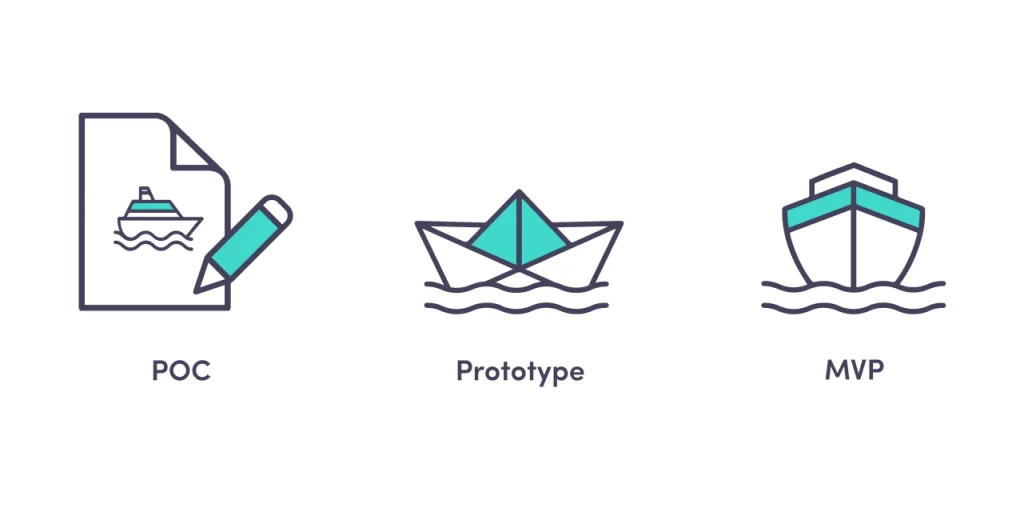
- POC (proof of concept): this is the first stage of software development, followed by the prototype, and then lastly, MVP. Your software development team shall create one to test whether your idea is feasible and technically possible for development. It can also be used at the pre-product stage to lessen technical risk during development.
- Prototype: the visual representation of the product. The prototype can be pitched to investors to test the initial reaction. It shows what a product should look like and allows simple interaction, but a prototype is not entirely functional.
- MVP: a trial yet functional product version used for testing on early customers. It makes sure that the product is suitable for the market before release and reduces the risk of wasting resources on development.
Why should you build an MVP?
MVP allows you and your team fully focus on a specific idea. From it, you can validate the idea to the targeted audience before settling for investment. This will give less space for error and more confidence in the product.
At the same time, minimum viable product in software development helps you collect customers’ feedback and reaction to the products. From that, you can determine what will be added to the final product to satisfy customers. Also, your development team can work on improvement and re-release after receiving feedback about the MVP.
After the evaluation and improvement stage, MVP helps the team determine what can and should be done in upcoming upgrades for better future growth. Using feedback from customers to refine the product can accelerate the development cycle.
MVP software development is also the gate to potential investors. If your MVP appeals to them, they are more likely to invest in the project in further development. It’s common to use MVP to attract investors and early users. Many businesses, such as Drobox, made a 20-minute video as an MVP to explain their idea and get thousands of sign-ups overnight without an actual product.
Is MVP “only” for startups?
No, businesses of every size and from every industry all need MVP. In the tech business, MVP is highly crucial to all small-to-medium and large businesses.
Even if you’ve already had a fully-developed-already-launched product, you can still use MVP. Tech giants have constantly used MVP in software development more than you thought, such as:
Leverage MVP to test a new feature. Pick a small portion of your user base and test the new upgrade to see how it works in the real world.
Make a video about the new features and advertise it (or the so-called video MVP) to test the public reaction.
Get your users to sign up for the test campaign to gather feedback on every update before the public announcement. This is what Microsoft did with their Windows Insider Program.
With such benefits from MVPs, both start-ups and large businesses will not let the chance of achieving high-performing features and better customer retention slip away.
Types of minimum viable product
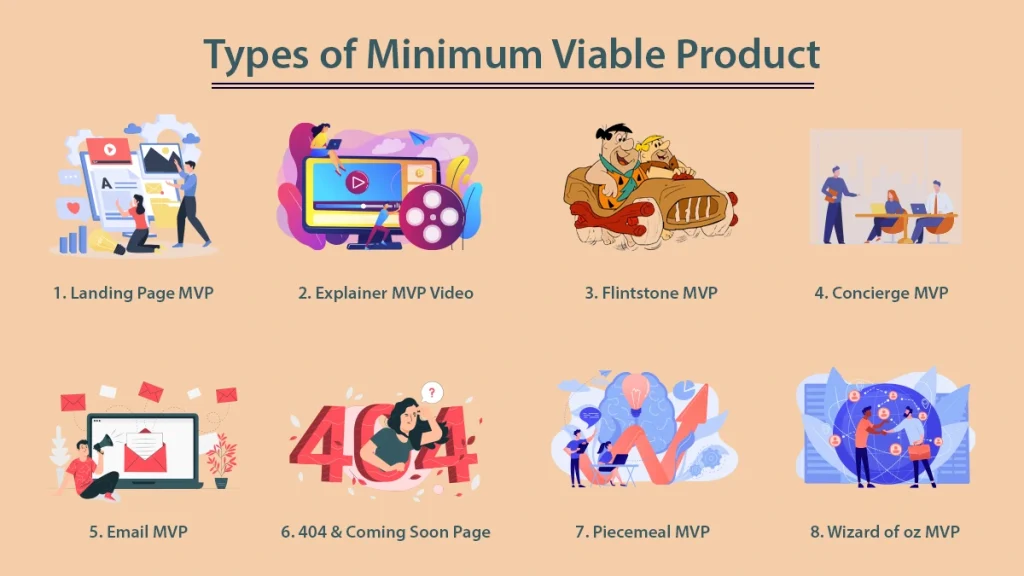
In this article, we will cover some of the main and most successful types of MVP in software development:
- Single-feature MVP: test how your targeted users will react to a specific feature
- Piecemeal MVP: you leverage existing platforms and tools to provide an MVP. Such as publishing your idea on Facebook to check for validation
- Landing page MVP: create a simple web page to introduce and showcase your products
- Concierge MVP: you test your idea manually with minimal help from the actual tech product
- First-man MVP: find a small group of people that are close to your targeted sector and let them try out the product before launching
- Video MVP: you create a video to introduce your product to attract investors or early users.
- Software prototype: a wireframe or prototype with basic features to demonstrate what your application is like.
Other MVP types you can learn about are crowdfunding MVP, email MVP, pre-order MVP, and fake door MVP. To choose the best MVP for your software development, you should identify your goal: Do you want to attract investors and users, or do you want to test the idea?
To understand more about these MVP, read this blog about how successful brand leverage them in real life.
5 steps to build an MVP in software development
Step 1: Do your market research
Your idea is great, but it’s greater if it could meet the market demand and compete against competitors. Do thorough market research to get to know your potential customers before moving on with the product development stage. It helps you understand the uniqueness that your product will bring to the market.
Identify what solution(s) your product can offer and how it can respond to customers’ needs. All these steps are necessary for building the MVP later. The essence of market research is to determine the benefits and value your product can offer clients.
Step 2: Map your user flow
Now you have understood your customers, you can move on to designing how your product will appear to your customers. Put yourself into the position of end users and map out the customer journeys.
The user journeys are about thoughts, feeling, and customer interaction with the product. What your customers think and feel while using your product extensively impacts their decision-making process. This information can also direct customers from one aspect of the product to another.
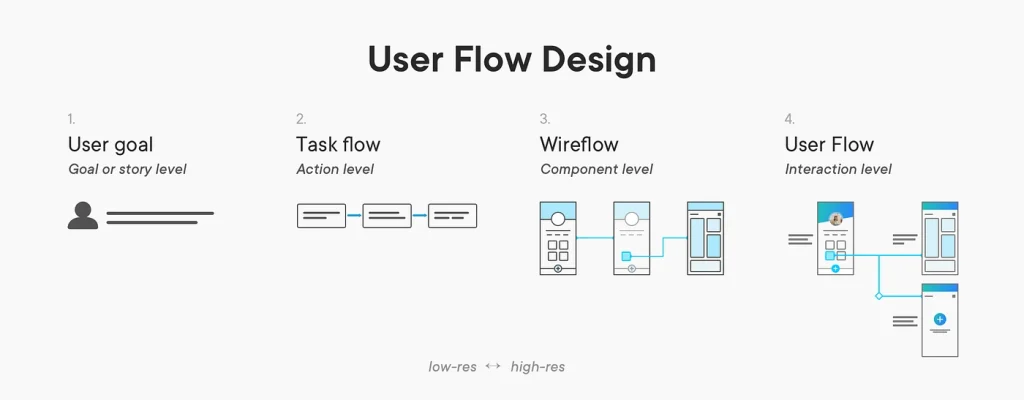
If you have more than one group of potential customers, highlight the one that can generate the most value. Therefore, you can save time analyzing the results.
After getting all the necessary data about user flow, you can decide which features your MVP software development will and will not include. These features will provide the most benefits to your users and play out the core of your product. In other words, these key features will solve precisely the problem you identified earlier.
Step 3: List your core MVP features
At this step, prioritize all the core MVP features that your product will support. To know what features should be supported, try to understand what users want and what benefits they can receive.
Once you get all the core MVP features, sort the remaining ones based on the priority levels, from the highest to the lowest. If needed, arrange those features in the priority-wise product backlog.
Step 4: Build a prototype
The interactive prototype will assist in mapping out the user flow, estimating MVP software development cost, and collecting early feedback. It can also help in the business sale context. When the prototype is done, it will be presented to early adopters to gauge their interest in the product.
You and your team can create a prototype using tools like Figma, Miro, Marvelapp, or AdobeXD; some have free pricing plans.
Step 5: Create and launch your MVP
Once the business has acquired the market needs and all the main features are decided, it’s time to create the MVP. Choose one MVP type, stick to it, and create a suitable marketing strategy along with it for better market exposure. The said MVP is not the less-quality version of the final product. Thus, it must meet the needs of the consumer.
Okay, now we have the MVP. What’s next?
Your MVP was released and received the first batch of responses and feedback. Now it’s time to collect them and analyze what the MVP had and had yet to perform well. If the feedback is positive and the MVP solves the user’s problem, go on with the same idea and add other necessary features to the product. If the MVP performed badly and didn’t receive wanted results, you might want to work on it.
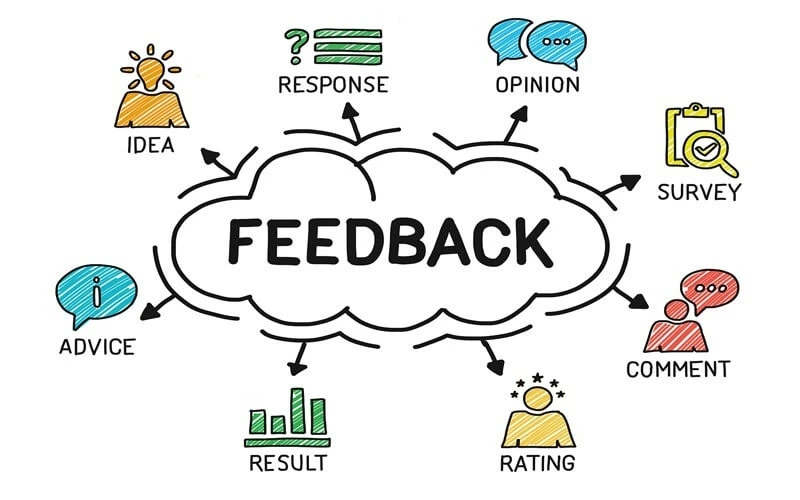
Low results are quite common, and the MVP software won’t work immediately. You and your team may initiate multiple rounds of fine-tuning and re-releasing the MVP. So don’t worry, just keep it going. Also, reworking at the MVP stage can save more budget than reworking with a fully developed product.
Try to identify the most pressing one that can affect the user’s experience and focus on it first. Solving issues can include removing impractical features.
Don’t spend too much time fixing issues all at once. Try to put out one feature at a time and work on the other as users continue to use the product. This constant loop will continue until your product is ready to be used by the public.
Different ways to measure your MVP success
There are multiple approaches to evaluate the success of MVP software development:
- Word of mouth: collecting data by interviewing potential customers is a good metric to predict success. The best approach is listing customers’ commonly facing issues and asking for their thoughts.
- Engagement: engagement allows a company to assess the current worth of a product. With engagement based on feedback, businesses can improve the user experience.
- Sign-up: the number of sign-ups shows customer interest in the product. Businesses can convert sign-ups into revenue based on measuring product interest.
- Feedback-based client appraisals: besides sign-up rates, companies can estimate user interest through the number of downloads and launch rates. Customers like lightweight apps, so you might want to create apps that take up less space.
- Active users’ percentage: the success of an MVP is not solely represented in the number of downloads and launch rates.
- Client Acquisition Cost (CAC): The index shows how much it costs to acquire a paying customer. It also informs businesses to keep up with the efficiency of their marketing strategy and when they should start making changes.
- Average revenue per user (ARPU): this index shows businesses how many paying users they currently have and helps them track profitable products. Take the total income for the day and divide it by the number of active users. You will get the ARPU index.
- Client Lifetime Value (CLV): Multiplying the profit per user with app usage duration and then subtracting the acquisition cost will get you the Client Lifetime Value. The index shows the spending per user before removing or stopping the app.
- Churn rate: Churn rate represents the number of people who have uninstalled or ceased using the app.
MVP rabbit holes you might fall into
One mistake can make your MVP software development, thus your product, a failure. And even though it’s a tool to test, you don’t want to spend a fortune on it just to receive nothing. Here are the common mistakes you might encounter while working on your MVP.
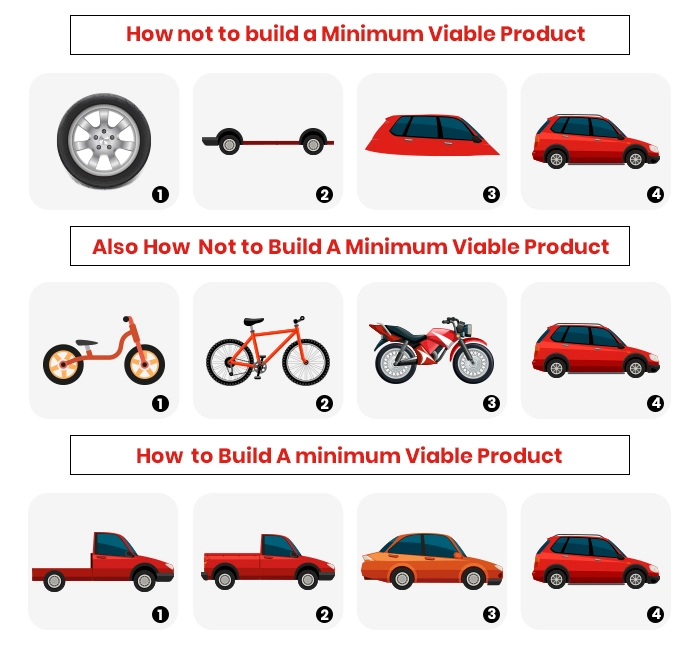
Your MVP might get off-track and not meet the customer’s demand. MVP aims to test your product core, so remember to include only the most essential ones. You give your customer a general concept of a future product, so don’t flood it with seas of additional features. Keep your MVP in software development as simple as possible, and if the response is not-so-positive, you may do another market research and improve your MVP.
Another mistake to avoid is a messy and incomprehensible control board. In this situation, the control buttons are not in the proper location, or there are more than 7 functions on the same screen. Related elements are not logically grouped together or in the proper size. Complex actions are not divided into separate steps. When logging in to such apps with these features, customers might feel helpless or unable to navigate the functions. Again, keep your MVP simple and focused.
It’s going to be a sham if you skip the prototype phase. Jumping straight from a business idea to the development stage is risky. Prototype stands between your idea and the complete product, helping you transform it into a functional product. In other words, let’s think of a prototype as an MVP to the main MVP. It might not contain fully functional features like MVP, yet it visualizes the product and user experience of the minimum viable product.
Last but not least, you might neglect the end-user’s feedback during minimum viable product software development. It would help if you started using them to improve the product. After all, modifications are made, all the qualities will be re-tested, re-learned, and re-measured. This process is repeated until the product is complete. And more upgrades will come along your product roadmap.
FAQ about MVP in software development
Uber, the famous transportation-booking service worldwide, was first created by the duo Garrett Camp and Travis Kalanick when they were fed up with high taxi fares in San Francisco. They first launched UberCab for limousine renting at a lower price, and only Chicago residents can use it. The app’s first version was inevitably flawed, with a limited covered area and audience. Later, the beta version helped creators recognize the concept’s value and obtain the first significant investment a year later.
An MVP Software Development can vary from $10,000 to $50,000 depending on your complexity, tech stack choices, and project scope. For detailed cost estimation, contact our team for an in-depth consultation.
Depending on the type of MVP and how complex your application is, it can take a few days to at least 4 weeks to make an MVP. At Synodus, our MVP development project usually takes one week to two.
Wrapping up
The necessity of MVP in software development for business is undeniable. Through these detailed instructions, we hope you get the basics of MVP, what to prepare for MVP, and what should be carried out next for a successful product debut. You must take time and be persistent with the MVP stage and the software development in general. If you are looking for an MVP outsourcing partner, Synodus is the choice.
How useful was this post?
Click on a star to rate it!
Average rating / 5. Vote count:
No votes so far! Be the first to rate this post.




